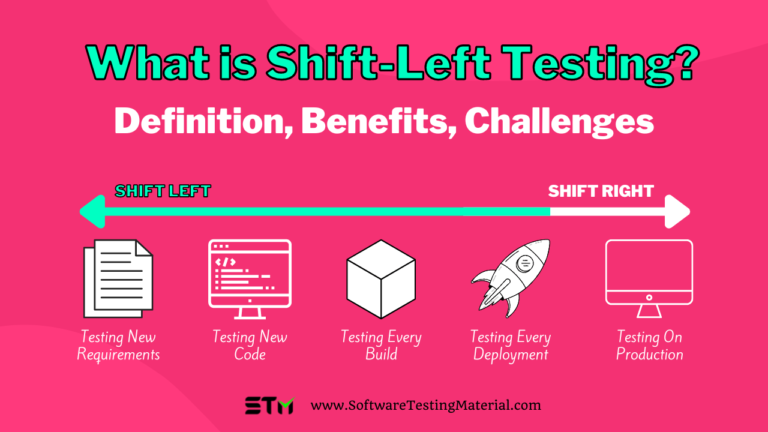Sample Test Cases For Pencil
In this article, we can look into a very frequently asked question in software testing interviews which is “How do you write test cases for Pencil?”
This article will guide will how to answer this question effectively and also as a bonus you’ll understand how to write effective and efficient test cases in testing interviews or for testing any product.
Earlier we have discussed some of the related posts and here are those for your reference.
- Test Case Template with Detailed Explanation
- Test Cases for Registration Page
- Test Cases for Login Page
- Test Cases for Gmail
- Test Cases for ATM Machine
- Test Scenario vs Test Case
- Test Strategy vs Test Plan
- 8 Types of Test Cases To Be Automated
- 8 Types of Test Cases Not To Be Automated

Related Posts – Test Cases
Thought Process
Take a deep breath and clear your mind, get to a structured thinking space. Think about the bigger picture, understand the objective, try to find out all the possible scenarios and connect them to a testing terminology.
The interviewer would be impressed if you can apply testing methods to the answer. Look at the below sample to understand it better.
- Core Functionality: The pencil should write.
- Boundary conditions: The pencil’s lead length.
- Stress Condition: The pencil shouldn’t break when we hold it or drop it.
- Usability Condition: The pencil should be easy to hold and easy to write.
- Security/Safety Condition: The pencil should not have harmful chemicals, it should not hurt anyone.
Basic Functional Test Cases For Pencil
- Check whether the user can write using a pencil.
- Check whether the written words are visible in the paper,i.e user can read it.
- Check whether the pencil leaves a mark i.e able to write on different types of paper.
- Check the darkness of the lead in the pencil, is it as per requirement?
- Check whether the user can write smoothly.
- Check whether the user can erase the written text using a regular eraser.
- Check whether the user can sharpen the pencil easily with a normal sharpener.
Boundary Conditions Test Cases
- Check the pencil on how many metres you can write.
- Check when the lead breaks when the user continuously writes on the paper surface without raising the pencil from the paper.
- Check whether the user can erase the writing when the text is written in a dark shade.
- Check whether the user can read the writing when the text is written in a light shade.
- Check the readability of the text when the lead i.e tip of the pencil is sharp.
- Check the readability of the text when the lead i.e tip of the pencil is blunt
- Check whether the user can write when the lead breaks in the top of the pencil.
- Check whether the user can write when the pencil is at its smallest size.
- Check the total length of text that can be written with a complete pencil.
User Experience Test Cases
- Check whether the user can hold the pencil comfortably.
- Check whether the user can hold the pencil without any hassle i.e check the feel of the pencil.
- Check whether the outer body of the pencil is hard or soft.
- Check whether the pencil contains an eraser in it.
- Check whether the user can write smoothly even when the lead is blunt.
- Check whether the designs printed in the pencil are as per the requirement.
- Check whether the shape of the pencil, cylindrical or hexagon provides a good grip for the user.
Performance Test Cases
- Check how fast the user can write with this pencil.
- Check whether the pencil will perform the same even though the user uses it continuously for hours.
- Check ‘How much can be written in one sharpened pencil till it gets blunt?’
- Check whether the nib of the pencil gets damaged when applying more pressure to the pencil.
- Check whether the quality and strength of the pencil’s wood are as per requirement.
- Check how effective the eraser is in removing the pencil marks.
User Interface Test Cases
- Check whether the type of pencil is as per the requirement
- Check whether the brand name of the pencil is visible and clear.
- Check whether the Height of the Pencil is as per requirement.
- Check whether the Strongness of the Pencil is as expected.
- Check whether the material of the pencil is strong and sturdy.
- Check whether the thickness of the lead in the pencil is as per the requirement.
- Check whether the shape of the pencil is as per the specification.
- Check whether the weight of the pencil is as per requirement.
- Check whether the type of the pencil (Graphite pencils, Solid graphite pencils, Liquid graphite pencils etc.) is as per requirement.
- Check whether the length and radius of the pencil are as per the specification.
Negative Test Cases
- Check whether the pencil writing is waterproof by pouring water into the paper.
- Check whether the pencil breaks when the user tries to bend it.
- Check whether the lead of the pencil breaks when it is dropped.
- Check whether the chemicals in the pencil are not harmful to the user’s health.
- Check whether the user can write when the tip is broken.
Test Data
When performing testing we should know exactly on which product or surface we are testing it. Test data is nothing but data that is specifically created for input for a certain test.
In the context of pen test cases, our test data would be the type of pencil we have to use, the darkness of the pencil etc.
Types of Pencils
- Graphite pencils
- Solid graphite pencils
- Liquid graphite pencils
- Charcoal pencils
- Carbon pencils
- Coloured pencils
- Pencil Crayons
- Grease pencils
- Watercolor pencils
- Mechanical pencil
- Copying pencil
Articles pencils have 20 different degrees of hardness, let’s look into what they are: EE, 12B, 8B, 7B, 6B, 5B, 4B, 3B, 2B, B, HB, F, H, 2H, 3H, 4H, 5H, 6H, 7H, 8H, 9H etc.
The hardness of the pencil ranges from 1 to 4, where 1 is the softest and 4 is the hardest.
Real-life Interview Scenario
There is an interesting LinkedIn post where a QA manager explains how he interviewed a candidate with these pencil test cases. Let’s look into a paraphrase of that interview below.
Interviewers love questions that are scenario based, open-ended, and vague, but they would be familiar even for a person from a non-technical background. Writing test cases for pencils would be a great example of such questions.
These types of questions are asked by the interviewers not to get an answer but to explore the candidates testing knowledge, skills, abilities, ideas, understanding of their thought processes, etc. Such questions are similar to integration testing where the test covers various aspects of the application, this question would probe the candidates to showcase their testing knowledge.
Let’s look into the question asked by the interviewer and the answer given by the candidate, also the perspective on those answers below:
Question: How would you test a pencil?
Answer: I will sharpen it and write on a piece of paper.
Interviewer’s perspective:
The candidate assumed it was a new wooden pencil, what if it was a mechanical pencil which doesn’t need any sharpening
Learning point: The candidate should not jump to a conclusion, but rather ask more about the requirements. In any type of testing, we have to have a clear idea about the requirements before starting testing.
Note: The interviewer doesn’t expect the candidate to answer the question at lightning speed, which is what the education system would have taught us. But in the interview, they just want to know whether you fit the role.
Question: Can you think of additional test scenarios for testing a pencil?
Answer: I will check whether the pencil is a colour pencil or not.
Interviewer’s perspective:
The candidate is broadening the scope of the testing, thinking about the colour of the pencil but they are not getting to the test concept yet.
Learning point: Still the candidate doesn’t enquire about the requirements, which is not a good sign but they are expanding the scope. When you are attending a QA interview try to answer these questions by connecting them to a test concept
Question: Any additional test scenario that comes to your mind?
Answer: I will test how much time it takes the pencil breaks while sharpening
Interviewer’s perspective:
This is good, the candidate seems to get into the stress testing concept, yet they are not using any testing terminology to define it.
Ideal interview scenario:
Here we can look into what the interviewer expects from the candidate to respond.
Question: How would you test a pencil?
Answer: What are the requirements regarding the pencil? (Here the candidate is not making any assumption, just responding with a question instead)
Question: It is just a pencil that you typically buy in the store, a wooden pencil with graphite lead.
Answer: Thank you for clarifying that.
And the candidate proceeds with the basic functionality mentioned above and gives various types of testing along with the scenarios.
Interviewer’s perspective: The interviewer would be impressed with the answer and get to know that the candidate has the proper knowledge of the testing techniques.
Conclusion
The basic test case provided in the article might have given the right idea on the test case creation process. The thinking process mentioned there would help you create the test cases of actual software applications.
Related Posts – Test Cases
Related posts:
- How To Write a Good Defect Report
- Why Did You Choose Software Testing As A Career
- Test Plan Template Detailed Explanation
- Web Cookie Testing – Test Cases of Cookie Testing






